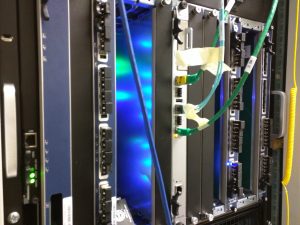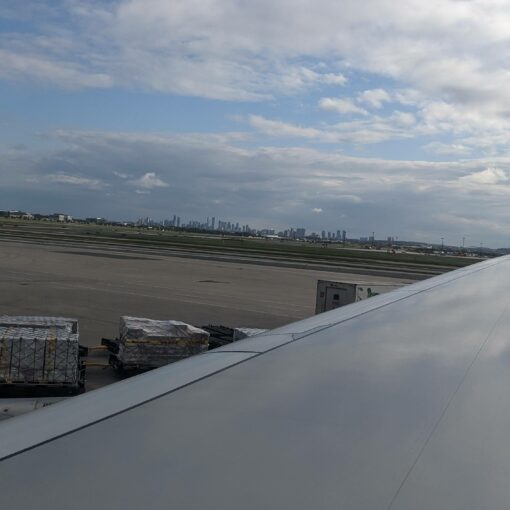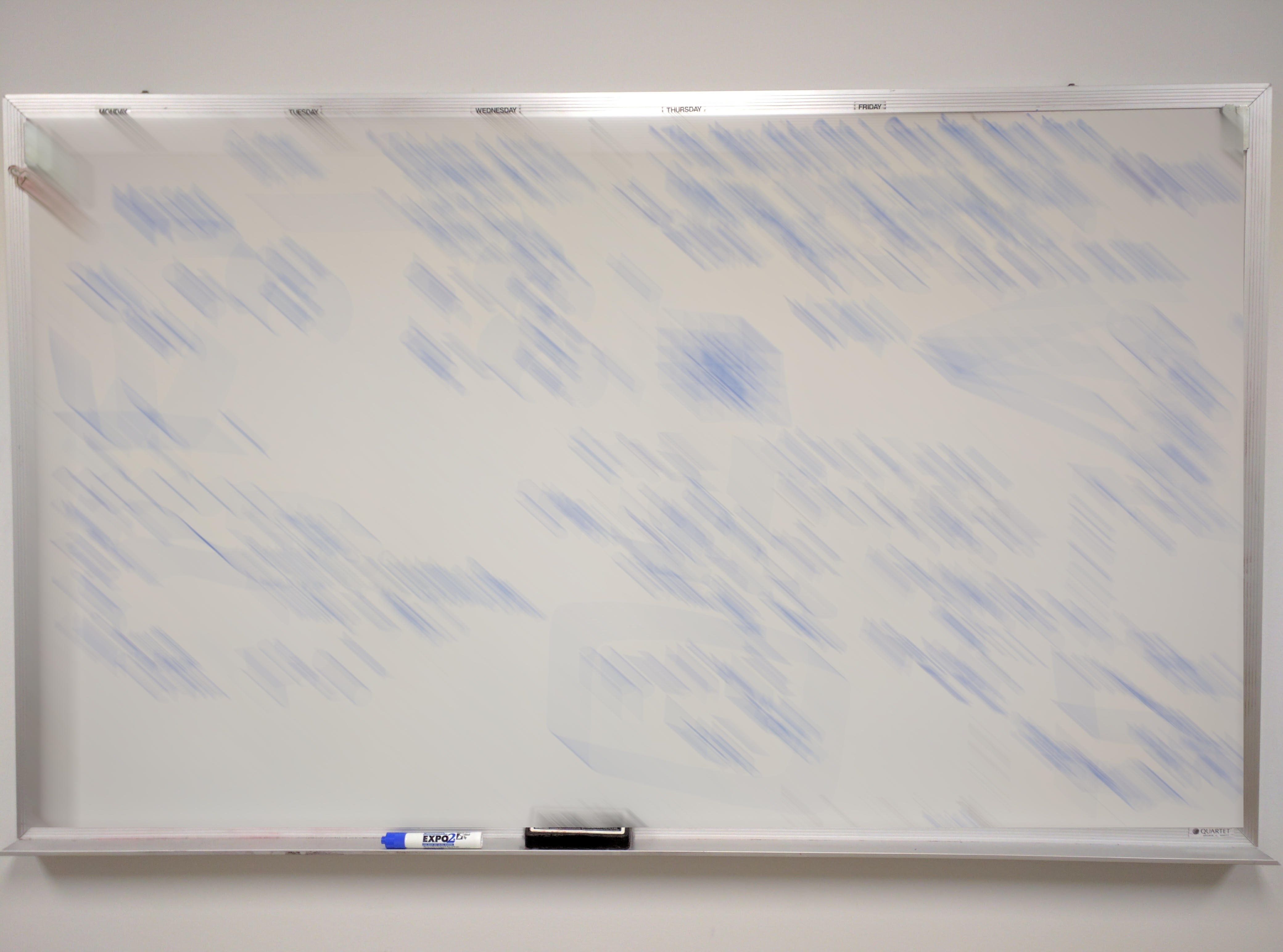This past week was my last week at CERN during my two-week trip to the laboratory. It was a week filled with many activities: we has an awesome group dinner; I got a tour of the ATLAS Fast TracKer laboratory; I got involved in a short-fuse project to study CPU usage improvements in bottom-quark-initated jet triggers; and I began the long trek back to the United States.
Part of something
I really like our SMU ATLAS group. One thing that becomes clear when I am at CERN is how cohesive are the students and post-docs that form the core of our research effort. For instance, one of the post-docs took the excellent initiative to organize a group dinner last Sunday night. We wound up going to one of my very favorite restaurants in the Geneva area: Cafe du Soleil. I first fell in love with this restaurant when I was a new graduate student. A fellow graduate student with whom I worked and shared an apartment in the summer of 1998 took me there for dinner, and I’ve been going there on and off ever since. I took Jodi there in 1999, not long after we started dating, and the place had such pleasant memories for the two of us that I once surprised her by recreating on our back patio a little slice of Cafe du Soleil, complete with a hand-painted wooden sign and an orange ceramic and metal fondue pot.
We had a long banquet table on the second floor, and spouses of group members who could make it attended the evening. We even welcomed a friend of the group to the dinner, and everyone seemed to have a good time over wine and hot pots loaded with melted cheese. The smell of fondue is so incredibly unique and feels like a warm home in my nose; it was so relaxing to go there and spend time with friends and colleagues.
ATLAS Fast TracKer “Lab 4”

My post-doctoral colleague from Argonne National Laboratory was also at CERN this week and he gave me a tour of the ATLAS FTK group’s “Lab 4” facility. This consists of two large racks containing a complete single “slice” of boards needed for constructing, refitting, and shipping charged particle trajectories (tracks) off to the next stage of processing: the High-Level Trigger (HLT).
The SMU effort is currently focused on delivering monitoring software for the FLIC – the “FTK-to-Level 2 Interface Card” – which is the last stage of the FTK before data are shipped off to the HLT. Making the whole chain of boards function cohesively and continually is the major focus of the ATLAS FTK group. It was fun to attend meetings of the FTK group at CERN, rather than doing so by video connection from abroad. They are a really intense and lively bunch, and I wish I could spend more time with them at CERN over the coming weeks. I look forward to being back in April, hopefully with a more fully functional monitoring software framework for the FLIC that we can discuss testing at CERN.
Godspeed, Triggers
At a regular weekly meeting of the ATLAS b-jet trigger signature group, which one of our post-docs at SMU is about to begin co-leading, we discussed the CPU used currently by the algorithms that make up the bottom-quark-initiated jet triggers. These triggers are essential for a set of ATLAS physics programs, including the identification and reconstruction of two-Higgs production, ![]() , with subsequent dual-decay of the Higgs bosons to a pair of bottom quarks. There are not many ways to make the detector “trigger” (that is, make the decision to keep a specific proton-proton bunch crossing) on this kind of difficult decay, and b-jet triggers are essential to this program.
, with subsequent dual-decay of the Higgs bosons to a pair of bottom quarks. There are not many ways to make the detector “trigger” (that is, make the decision to keep a specific proton-proton bunch crossing) on this kind of difficult decay, and b-jet triggers are essential to this program.
It was clear from a presentation from one of my colleagues that there are likely CPU cost savings lurking in the decisions currently used to build the b-jet trigger decision. However, it was also clear that my colleague faced the prospect of working on this entirely alone. I am no expert in running our trigger software (the curse of being a faculty member), but I do know how to run ATLAS software very fast on our SMU ManeFrame supercomputer cluster. So, I volunteered to help. My colleague sent me a flawless recipe for running her example code and showed me how to do the variations. In all, there were almost 30 such variations and with her example and my own python code, I was able to get all of the variations she had been thinking of assessing done in just a few hours on Thursday. She’s presently analyzing the variations to see what effects they have, positive or negative, on CPU usage and efficiency and accuracy of the b-jet triggers.
Outlook
This is going be a busy week ahead. Jodi is leaving tomorrow for Pacific Northwest National Laboratory in Washington. She and I will get to see each other for about 16 hours between me landing and her leaving. Wednesday is my second PhD student’s (J) thesis defense. Thursday we have a special colloquium from the external member of J’s thesis committee. I’ll get some room to breathe again starting on Friday.



